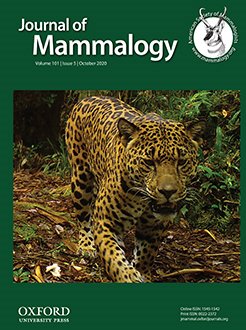The Asian golden cat (Catopuma temminckii) occurs in small, declining, and highly fragmented populations throughout Southeast Asia, whereas the smaller leopard cat (Prionailurus bengalensis) is common and widespread. In contrast to leopard cats, little is known about the ecology of Asian golden cats, and resource partitioning between these species has not been studied. We used DNA-confirmed scats, camera-trap data, and prey surveys, to determine the diet, prey selection, and activity, of Asian golden cats and leopard cats in a protected area in northern Laos. The two felids had different diets: Asian golden cats consumed mostly ungulates (35% biomass consumed), murid rodents (23%), and carnivores (15%), whereas leopard cats consumed mostly murid rodents (79%). Asian golden cats were not random in their consumption of ungulates, because muntjac (Muntiacus spp.) were selectively consumed over larger ungulates, indicating muntjac were preyed upon rather than scavenged. Dietary overlap between the two felid species was moderate (R0 = 0.60), and the dietary niche breadth of Asian golden cats (B = 8.44) was nearly twice as high as that of leopard cats (4.54). The mean (± SD) scat diameter was greater for Asian golden cats (2.1 ± 0.3 cm) than leopard cats (1.8 ± 0.2 cm), although diameters of leopard cat scats were considerably larger than previously assumed for this species. The felid species differed in their activity patterns, because Asian golden cats were diurnal, whereas leopard cats were nocturnal, although they did not differ in their use of elevation, suggesting there was no habitat segregation. Overall, leopard cats appeared to coexist with Asian golden cats, a potential predator and competitor, by exhibiting dietary and temporal partitioning. Our results showed that muntjac were important prey of Asian golden cats, suggesting the management of muntjac might be important for conserving populations of Asian golden cats.
How to translate text using browser tools
3 October 2020
Diet, prey selection, and activity of Asian golden cats and leopard cats in northern Laos
Jan F. Kamler,
Xaysavanh Inthapanya,
Akchousanh Rasphone,
Anita Bousa,
Chanthavy Vongkhamheng,
Arlyne Johnson,
David W. Macdonald
ACCESS THE FULL ARTICLE

Journal of Mammalogy
Vol. 101 • No. 5
October 2020
Vol. 101 • No. 5
October 2020
activity overlap
biomass consumed
Catopuma temminckii
dietary overlap
food habits
Lao PDR
Nam Et-Phou Louey




